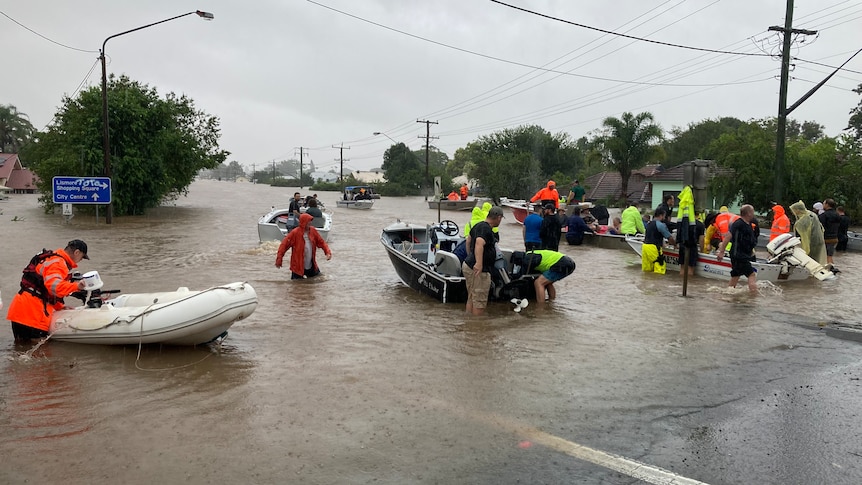Australia’s national weather agency has issued a staunch defense of its handling of deadly flooding in New South Wales earlier this year, after a parliamentary report found it did not comprehend the scale of the threat.
Key points:
- The Bureau of Meteorology has defended its role in the 2022 flood event, arguing government and communities were warned
- A NSW parliamentary report found the bureau used “incorrect” data to brief agencies
- A residents group wants more control over decisions made in a flood crisis
Five people died in the first flood event in the Northern Rivers on February 28, with evacuation orders for towns such as Lismore issued through the night as flood waters tore through the region.
A NSW parliamentary committee found the Bureau of Meteorology (BOM) was not prepared, that information used to make decisions was “incorrect and out of date”, and recommended it review its data processes.
The bureau declined to be interviewed by the ABC but in a statement a spokesperson said the agency “strongly refutes” the committee’s findings.
The statement outlined how the BOM warned governments, including national cabinet, and the community in 2021 of a likely La Niña event and above-average flooding risk across Australia’s north and east.
Specifically in relation to flooding in northern NSW, it said it told the State Emergency Service (SES) five days before the first event of “the potential for life-threatening flash-flooding over the NSW north coast” and that it issued flood watches and warnings “many days in advance”.
“The bureau also explicitly identified the risk for intense localized rain events, life threatening flash flooding and the potential for rapid river rises,” it said.
The statement also addressed the report findings that some agencies treated it “as a nine-to-five business operation”, arguing it was instead a “365 days a year, 24/7 operation”.
The bureau said that for this event, a specialized meteorologist and a hydrologist were embedded with the SES at the Wollongong headquarters, and that the bureau supplied area-specific briefings to agencies.
It also noted that engagement with the parliamentary committee had been “limited”, and that a separate independent flood inquiry, which has handed its report to the government but was not yet public, was much more proactive with asking for information.
‘more of the same’
Kyogle Shire Council general manager Graham Kennett said the report was missing recommendations to improve telecommunications, which were crucial for monitoring levels to make decisions.
“If we know what’s going on in this catchment and in that catchment, then we have warning times and we can predict flood levels to a degree of accuracy that is good enough to make informed decisions about when people need to leave,” he said.
“It takes 45 minutes to an hour for the data to get online and in some cases that is too long for a decision-making process.”
In Lismore, a group of residents said the 37 recommendations did not go far enough, and wanted locals to be given the power to make decisions in future flood events
The parliamentary committee slammed the response of the SES during the flood crisis, accusing it of “issuing out of date, inaccurate and confusing messages”.
It has recommended that a restructure of the SES be conducted to harness local knowledge and increase the number of salaried staff and volunteers.
Lismore Citizens Flood Review group coordinator Beth Trevan said while the inquiry findings mirrored the group’s submission, the recommendations were “disappointing” as they appeared to be “more of the same”.
Ms Trevan wants local people on the ground to have the power to make decisions.
“In the past we’ve had long term local people, who had been here for 30 or 40 years and were in senior positions at a regional level … and the knowledge of the entire area and the knowledge of all the agencies and the people who ran them was at their fingertips,” she said.
“By the time it gets transferred from here to Sydney and they have a chat with the bureau, the time is wasted, and we don’t have time.”
Catherine Cusack represented the Liberal Party on the parliamentary committee, but no longer sits in parliament after letting her membership lapse in protest at her party’s handling of the crisis.
She fell short of backing the notion that local people should be making decisions but said they should be “more front and centre”.
“Of all the data that flows into them, there’s just no capacity for locals to say ‘I don’t know what it is in your gauges … but all I can tell you is the water is meters high up here in an unprecedented way’ ,” she said.
The SES said it is reviewing the report and will provide a response to parliament.
.
